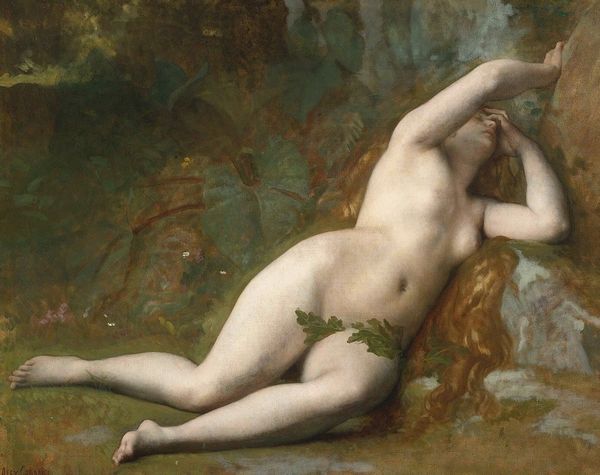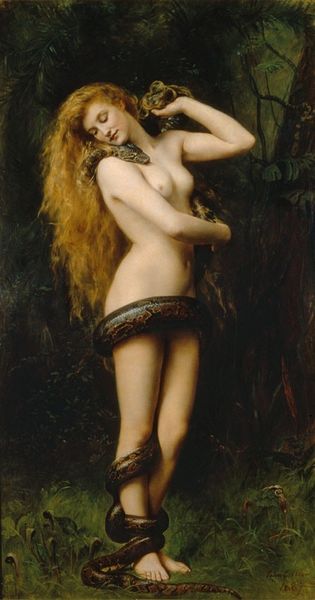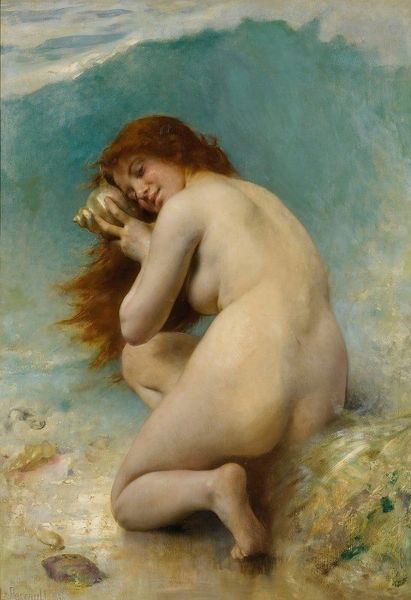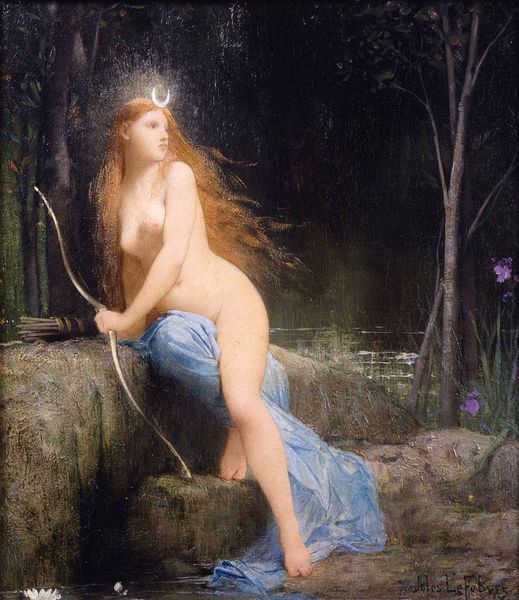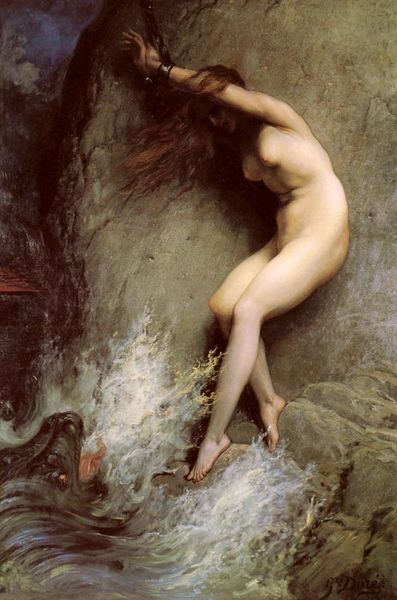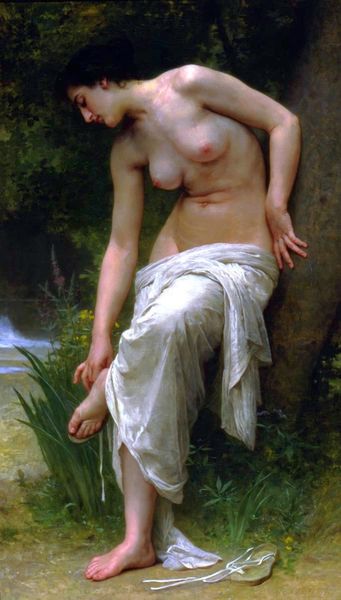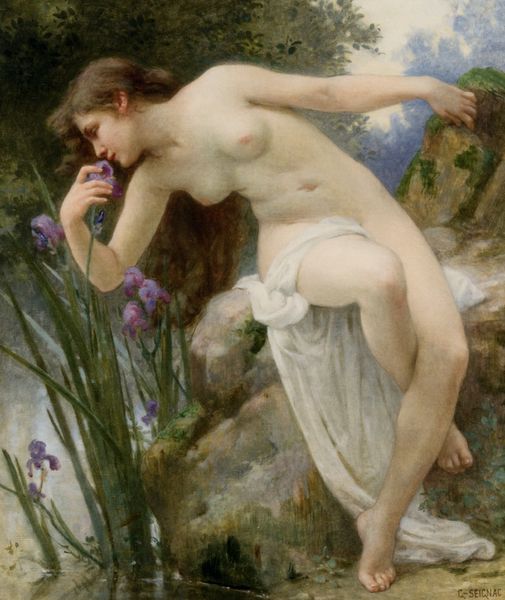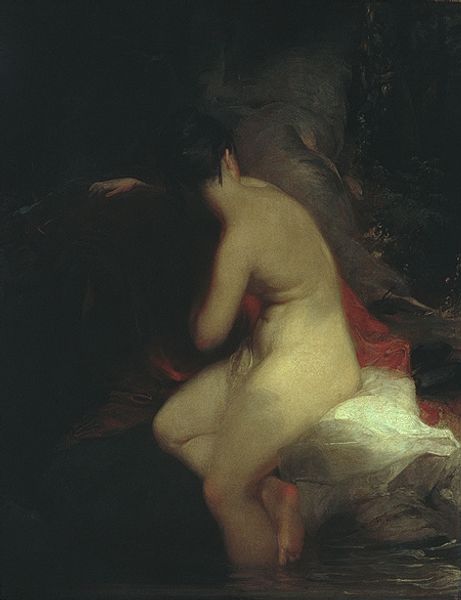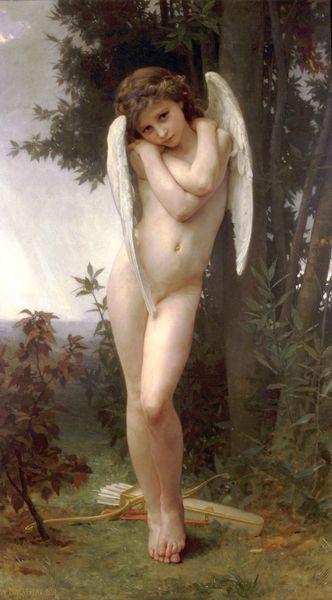
painting, oil-paint
#
fantasy art
#
painting
#
oil-paint
#
landscape
#
underpainting
#
human
#
history-painting
#
academic-art
#
nude
#
realism
Copyright: Public domain
Curator: Jules Joseph Lefebvre painted "Mary Magdalene in the Cave" in 1876 using oil paint. The work renders Mary Magdalene nude, reclining in a dark grotto, her face obscured by her forearm. What is your first impression? Editor: Isolation. She’s physically vulnerable, almost discarded, and the way she shields her face feels like a response to a violent act of looking. Is it meant to evoke shame, perhaps? Curator: The artist masterfully plays with light and shadow here. The pale skin contrasts intensely with the dark cave, emphasizing her form while drawing attention to the composition's strong diagonals—the body and the rocky slope. The rendering showcases Lefebvre’s meticulous technique and precision, true to Academic art traditions. Editor: Precisely. Lefebvre capitalizes on the academic style by aestheticizing the female nude and placing it within a religious context, seemingly inviting viewers to contemplate Magdalene’s penance. The symbolism here is tricky, isn't it? How do we navigate the eroticized presentation versus the suggested religious suffering? Curator: That friction is central. The smoothness of the figure is arresting; one can’t ignore Lefebvre’s attention to the sheer physicality of the body. I’m intrigued by how he contrasts the rough texture of the cave with her refined form, thereby emphasizing both her vulnerability and sensuality. The reddish hue of her hair repeats in the stone's undertones, weaving her into this harsh landscape. Editor: That's an interesting perspective. Thinking about the male gaze, and considering that academic painting from that period served powerful elites, how does this image endorse power dynamics that normalize female suffering? The way she covers her eyes could indicate not just repentance, but also powerlessness against such visual appropriation. Curator: Perhaps. Although the pose itself follows classical traditions—recalling reclining figures of antiquity, he elevates her form to a more idealized version that goes beyond mere representation. This idealization is a crucial aspect of academic art. Editor: Agreed. Still, it is also a representation infused with cultural values regarding the female body and religious themes. Images like these perpetuated, and continue to perpetuate, complex social constructs. Curator: The more we scrutinize Lefebvre's artistic choices, the more apparent the delicate balance is that he strikes between technique, symbolism, and underlying emotion. Editor: Indeed, reflecting on Lefebvre’s painting helps reveal how artistic techniques of the past carry significant cultural and historical baggage into our contemporary reading.
Comments
No comments
Be the first to comment and join the conversation on the ultimate creative platform.
